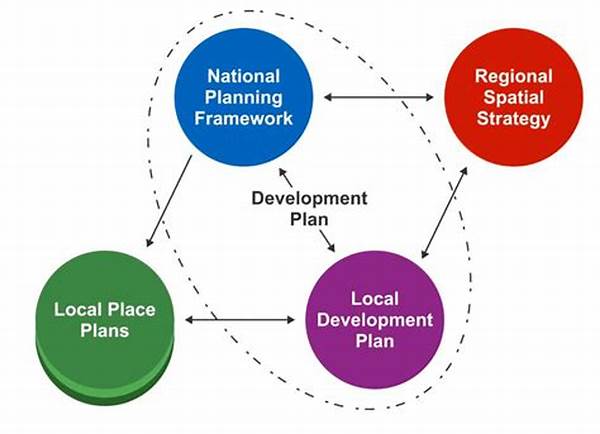It was a crisp autumn morning when Emma found herself standing in the dimly lit theater, the wooden floor creaking beneath her feet. The scent of dust and aging velvet filled the air. Emma, a seasoned director, had been called to breathe life into a production that had lost its way. The cast was talented but unruly, each rehearsal a chaotic dance of missed cues and clashing egos. It was clear they needed something more—a coordinated rehearsal plan development. She took a deep breath and delved into the task, armed with nothing but her vision and determination.
Read Now : Crafting Standout Actor Resumes
The Essence of a Coordinated Rehearsal Plan
Emma understood that the heart of a successful production was a coordinated rehearsal plan development. The cast needed guidance, a shared vision that harmonized their individual talents into a symphony of performance. She gathered them in a circle, right there on the stage. With the script in hand, she painted the story’s essence, drawing each performer into the narrative world they would inhabit.
Through her coordinated rehearsal plan development, Emma parceled out scenes like precious gems, focusing the actors’ energy on perfecting each moment. Laughter echoed through the theater as they found their rhythm, crafting relationships not just on paper, but in the chemistry between them. Emma watched as the chaos turned into collaboration, individual voices melding into one powerful collective.
Yet, the magic of a coordinated rehearsal plan development was not just in the seamless execution of scenes, but in the camaraderie that bloomed. The cast, once a scattered assembly, became a family. With each practice, their movements grew synchronized, their dialogues more poignant. As the final rehearsal closed, Emma stood back, eyes glistening, knowing that what they’d created was more than a play—it was a testament to unified hearts and artistic synergy.
Navigating the Path to Synchrony
1. Emma began her journey of coordinated rehearsal plan development by deep diving into the narrative, ensuring each actor understood their character’s essence.
2. The second step was scheduling—Emma crafted a meticulous calendar that balanced the unique demands of the production and the availability of her cast.
3. Emma emphasized the importance of open dialogue, creating an atmosphere where every actor felt safe to explore their character and contribute to the coordinated rehearsal plan development.
4. She also introduced collaborative exercises, weaving trust-building activities into their schedule to enhance the team dynamics essential to coordinated rehearsal plan development.
5. The magic didn’t end with the final curtain call. Emma extended her coordinated rehearsal plan development to include feedback sessions, ensuring growth beyond the immediate performance.
Building the Framework
The cornerstone of Emma’s success lay in the detailed architecture of her coordinated rehearsal plan development. She began by observing the strengths and weaknesses of her cast, meticulously weaving together a roster that played to each actor’s potential. It was an intricate dance, aligning scene rehearsals with individual coaching sessions.
Read Now : Roles In Educational Theater Productions
Emma knew that the coordinated rehearsal plan development required more than technical skill; it was about cultivating a shared heartbeat. Under her guidance, the cast explored their characters far beyond the pages of the script, breathing life into every line. They experimented with expression, stretching their creative muscles under the watchful eye of their director.
The Subtle Art of Adjustments
Emma discovered that effective coordinated rehearsal plan development allowed for flexibility. It was about respecting the art form’s fluidity, understanding that even the best-laid plans needed room to grow. With each rehearsal, alterations were made, tweaks that brought pieces together like a puzzle.
Her coordinated rehearsal plan development became a living document, adapting to the evolving needs of the cast. Emma’s ability to blend consistency with adaptability turned the once-disheartened troupe into a force of nature. Her dedication to their success breathed new energy into the production, transforming the theater into a place of inspiration and creativity.
Bringing it All Home
After weeks of tireless effort, the day of the performance had finally arrived. The once-empty seats were now filled with expectant faces, their anticipation a tangible presence. Backstage, Emma gathered her cast for one last pep talk, the fruits of her coordinated rehearsal plan development evident in their confident stances and beaming smiles.
As the curtain rose, Emma took a step back, her heart swelling with pride as her vision came alive. The play unfolded seamlessly, a testament to the meticulous care that had gone into every moment. The audience was enthralled, their applause echoing the success of Emma’s coordinated rehearsal plan development. What had begun as a mere jumble of talent and ideas had blossomed into a masterpiece, a tapestry of performance where every thread played its part.
The Craft of Coordination
Emma’s journey was not just a testament to her dedication but an example of the power of a coordinated rehearsal plan development. Her story spread beyond the walls of the theater, inspiring other directors to see the beauty in structured creativity, to appreciate the harmony that comes from unified effort. With each note, cue, and breath in sync, Emma’s story became a beacon, illuminating the path for countless others on their artistic journeys.
